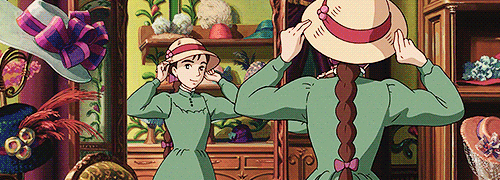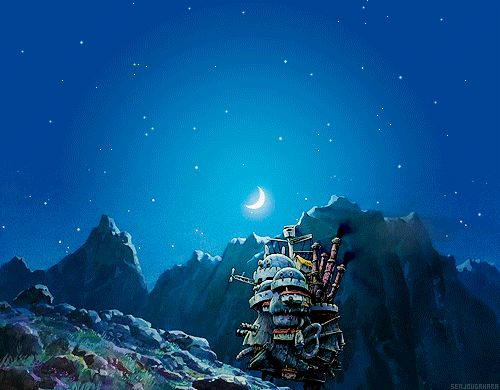
Cinematic Techniques



Extreme long shot
Extreme long shots were used all throughout the film, especially at the start of a new scene. These long shots were mostly of the landscape (or setting of the scene) and were taken from a great distance to show the location of where the scene would take place. Several long shots at the start and towards the end of the movie show the size of the fields, valleys and countryside, and an extreme longshot with Howl’s castle in the background helps us to see that the castle is in the shape of a heart. Also an extreme long shot showing the all the shooting stars, emphasizes the amount of stars falling and dying as they touch the water, and makes Calcifer (a falling star that was saved by Howl) more significant and special. This extreme long shot includes the dark night sky that gives a sad and lonely feeling but the shooting stars falling out of the sky (seen in the shot) as well as the happy music during this time gives a sense of hope and enlightenment.

Close-up shot
Throughout the film, many close-up shots are used to display the facial expressions, emotions, feelings, and the different transformations that the characters go through. There are many close-up shots especially of Sophie, showing her transformations from an old lady to a young girl and vice versa. Overall, close-up shot in this film shows the viewer how a character reacts to something, and the way that they express what they feel like through facial expressions and gestures.
Over the shoulder shot
Over the shoulder shots are used when Sophie looks at herself in the mirror, both when she was young and when she turned old. In both of these over the shoulder shots, we see Sophie from a different perspective and in this case not how we individually see and judge her appearance, but how she reacts to her own appearance. In general, over the shoulder shots, allows the viewer to either see the reaction of the character (if they are looking at a mirror), or to see the expression, reaction or response of the person they are talking to.
Long shot
Several longshots are used to show when characters are having conversations and to also show the location of where they are. An example of a long shot in the movie is near the start of the film when Sophie is talking to Mr. Turnip Head. This long shot includes Sophie and Mr. Turnip Head as well as the rocky hill she is climbing and the changing sky. Throughout the film, long shots are used frequently, not only to show people talking or doing an activity, but more importantly, to also include what’s going on in the background, to show the changing environment (in most cases is the sky) or a new location or landscape.




